Events that took Place in Barpeta District during Freedom Struggle
Events that took Place in Barpeta District during Freedom Struggle
- Celebration of Nowgong Day, 1942
- Peasant Agitation in Barpeta, 1869
- Underground Activities During Quit India Movement in Barpeta
- Gauhati District National Conference, 1940
- Raijmel Revolt at Panagaor Tup
- Revival of Assam Bell Metals
- Swadeshi meeting at Barpeta, 1907
- Participation of Women in Barpeta District Congress Committee, 1940
- Guneshwari Mazumdar and Barnagar Mahila Congress
- Protest against the arrest of Congress leaders in Nalbari, 1942
- Participation of Women of Bajali in Freedom Movement, 1941
- Meeting at Pathsala, 1943
- Lachima Revolt
- Quit India and August Revolution (1942)
- Civil Disobedience Movement and Barpeta (1930)
- Non-Cooperation Movement and Barpeta (1921)
- Lachima Raij Mel (1894)
- Barpeta District and Colonial Regime
The big stories often make the headlines of our historical narratives, but history is not only about the landmark events - it finds shape and character in the myriad events that led up to a flashpoint of change. An attempt to discover and document stories of people, events, and places linked to the freedom struggle of India at the micro level of the district has led to the creation of a Digital District Repository. Stories in this section can be broadly classified under Events.
Celebration of Nowgong Day, 1942
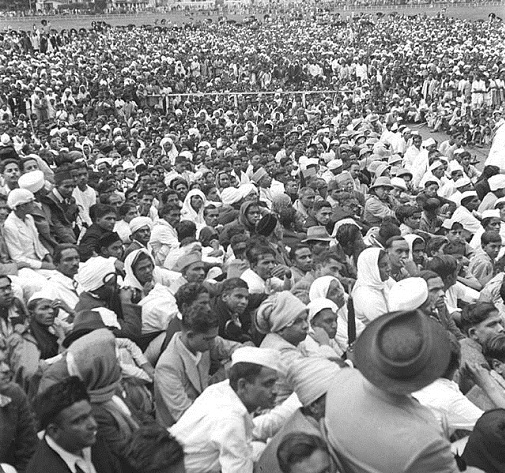 The onset of the Quit India movement led to the imprisonment of Congress leaders which forced the other leaders to retreat to the underground and carry on the activities forward, clandestinely. Despite government suppression, people took to the streets in large numbers throughout the country. Barpeta, a district in Assam, witnessed fearless participation by the people in the movement.
The onset of the Quit India movement led to the imprisonment of Congress leaders which forced the other leaders to retreat to the underground and carry on the activities forward, clandestinely. Despite government suppression, people took to the streets in large numbers throughout the country. Barpeta, a district in Assam, witnessed fearless participation by the people in the movement.
Complete hartals were observed and peaceful processions were taken out in Bajali, close to Barpeta. People from Bajali came together and organized meetings in the villages of Jalah, Choukhuti, Pamunkuchi, and Nityananda. At these meetings, ‘Nowgong (Nagaon) Martyrs Day’ was observed on 25th September 1942. The meeting at Jalah was attended by a large mass of women. The police could not afford to put such a large number of people who were attending the meetings in jails so they resorted to opening fire upon the crowd after detaining Girin Chandra Choudhury, the president of the meeting at Jalah, in Barpeta. The police action agitated the women of nearby villages, who gathered in thousands and marched to the Patacharkuchi police station and attacked it. The police, then, stepped aside and women hoisted the national flag on the thana precinct while singing patriotic songs and sloganeering.
Such collective action by the people, especially women is a testament to their glorious contribution to the independence of India.
Peasant Agitation in Barpeta, 1869
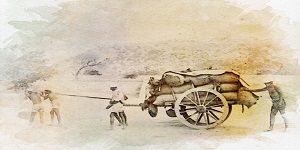 Many areas of Assam witnessed peasant uprisings against the oppressive land tax levied by the British beginning in 1864, one of those areas was the Barpeta district in Assam.
Many areas of Assam witnessed peasant uprisings against the oppressive land tax levied by the British beginning in 1864, one of those areas was the Barpeta district in Assam.
In 1869, the colonial authority in Assam increased the rates of land revenue, disregarding the agricultural challenges faced by the region. This led to widespread discontent among the peasants, resulting in revolts against the revenue enhancement. In Barpeta, a public gathering was organised in late January 1869 to protest the increased rates. The Sub-Divisional Officer, Mr. Campbell, instructed the Police Inspector of Barpeta to investigate the gathering and provide the names of prominent leaders. However, the police party, with limited manpower and firearms, was unable to disperse the crowd.
Despite the colonial government's efforts to suppress the movement, they could not completely halt the discontent among the peasants. As a result, the practice of holding Raijmels continued, albeit irregularly. The grievances and dissatisfaction of the peasants persisted, keeping alive their need for collective action and platforms to voice their concerns for the peasant and national struggle alike.
Underground Activities During Quit India Movement in Barpeta
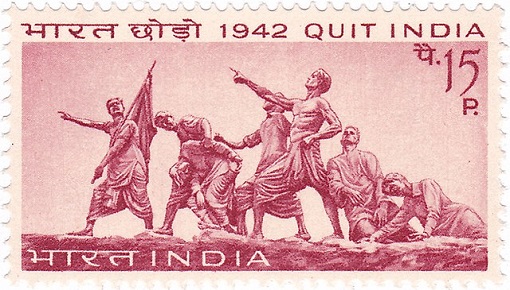 Freedom fighters all over India were compelled to resort to underground activities during the Quit India Movement as a result of the increased repression from the Government. The Barpeta district in Assam emerged as the hotspot of revolutionary activities during this decisive period in Indian history. Revolutionary activities in Assam took various forms during the Quit India Movement, including the destruction of railway tracks, the cutting down of telegraph poles, and attacks on roads and bridges in an effort to disrupt the British administration.
Freedom fighters all over India were compelled to resort to underground activities during the Quit India Movement as a result of the increased repression from the Government. The Barpeta district in Assam emerged as the hotspot of revolutionary activities during this decisive period in Indian history. Revolutionary activities in Assam took various forms during the Quit India Movement, including the destruction of railway tracks, the cutting down of telegraph poles, and attacks on roads and bridges in an effort to disrupt the British administration.
In the Barpeta district, Brajanath Sarma, the famous litterateur and freedom fighter took the lead in organizing revolutionary activities and orchestrated attacks on the residences of government officers and contractors. In these activities, the revolutionaries of Assam drew inspiration from the actions of Jayaprakash Narayan and his “Azad Dasta”, active in Bihar. Among the most significant militant actions in this region was the raid on the Sapna Aerodome on 26 August 1942, where a large band of volunteers attacked and destroyed military ammunition dumps and other structures. Simultaneously, the post office at Sarbhog village was also destroyed by the revolutionaries. Brajanath Sarma and his associates went underground soon afterward and evaded police capture for the duration of the movement.
These incidents at Barpeta manifest the courage that people had gathered and their resolve to drive the British out of their motherland.
Gauhati District National Conference, 1940
The Gauhati District National Conference was held on 11th and 12th February 1940 at Sanapara in Barpeta, Assam.
After celebrating Independence Day of India on 26th January 1940 in an impressive manner, many meetings were conducted around the country to organize further activities. The Gauhati Conference was presided over by Fakhruddin Ali Ahmed and attended by more than 10,000 people. In their speeches, Hemaprava Das, Girijabala Baruah and Bhanumati Bai, the important women speakers, urged the people to fight against opium and other intoxicants. The Conference declared that "no one else other than the Indians have the right to frame the constitution of India” and that it should be done by a democratically constituted Gana Parishad (the Constituent Assembly).
The All-India Congress Committee (AICC) declared in March that nothing short of complete Independence will be accepted. Various regional satyagraha was launched throughout the state in September 1940 to campaign against the colonial government.
Raijmel Revolt at Panagaor Tup
By virtue of a Resolution in 1870, British Government started categorising the land occupancy and ownership to implement heavy taxation on farmers of Assam through Mouzadari system (*Mouza is a revenue unit and the Head of this unit was called Mouzadar).
Sarukhetri Mouza of the then Kamrup district, under the Barpeta sub division was situated on mostly low-lying land mass and therefore cultivation was difficult other than a few Rabi crops.In general, the occupants in this area were holders of very less land and were basically artisans, whose earned their livelihood by engaging themselves as labour in scattered tiny cottage industries in Sarthebari manufacturing Bell Metal pottery and utensils.
However, with the implementation of the new Act, everyone was brought under Riyati System and the Mouzaders became more powerful with the blessings of the Colonial Government. The Britishers started harassing the people not only by demanding taxes but also seizing the riyati land and property of those who failed to pay the taxes, irrespective of whether one is farmer or a non farmer. Nobody was spared- whether it was Satra’s and Satradhikars- the priests of Satra’s and other religious priests and pujaris, poor people occupying uncultivable low-lying land with watery mass of Sarukhetri Mouza, bell metals Artisans and labourers of Sarthebari village.
Miseries were further compounded by an increase of tax by 60 to 70 percent. By 1892, a few small incidents like resisting to pay taxes started to take place from time to time like other places of Assam and rest of India mobilization for which a kind of uprising and peasants’ revolt was shaping up by 1894 in Sarukhetri Mouza. On getting information on possibility of mass revolt against such taxation, British Administration selected a place with higher land area called Panagaor Tup situated in the southern part of Sarthebari. Currently this place is a township in the East of Lachima Village, on the bank of old Alpa rivers. Britishers established a temporary Police station, with a rest house for higher officials on visit as well as a temporary Jail to forcefully eliminate any possibility of uprising in the area. On the other hand, the deputy commissioner, Kamrup also ordered Army to be deployed for patrolling in the Sarukhetri Mouza. Such action of aggressive handling, inhuman tortures even on slightest resistance or inability to pay the tax for not having any savings, were so rampant that most of the people barring ladies and children had to flee away to secret places or nearby thick forest areas. They even could not come back to celebrate their famous yearly Shri Shri Jagannath Mahaaprabhu Sabhaa Mahotsav which takes place every year on the Maaghi-purnimaa. They secretly cleared up a small area in Heerabari Jungle and completed the essential rituals pujan and Yagyaahuti related to the Mahotsav.
However, such hardship of roaming around jungles to avoid torture by Army and police without proper shelter and sometimes without food did not deter the mobilization for resistance to taxation system. Secret communication with people preparing for such resistance at places like Nalbari, Rangiya, Barkhetri, Barbhag, Dharmapur continued. Meanwhile, in an incident on 21st January 1894 Late Haliram Mandalwho was on a tax collection drive with a group of people was so severely manhandled by angry public of Bannarpar of Kapla village, that he later succumbed to death.
The leaders, on receipt of an advance information that the Sub Divisional Officer (SDO) of Barpeta was visiting Sarukhetri on 24th January 1894, carried out massive mobilization to ask the people to gather in the Panagaor Tupin front of the temporary police station, where they knew that SDO was sure to visit. When SDO reached Panagaor Tup, he was taken aback by huge gathering estimated of more than 6,000 volunteers who came not only from Sarukhetri area but also from distant places like Rangiya, Nalbari, Barpeta, Barbhag, Barkhetri etc. in solidarity with local sufferers. Noticing the aggressiveness of the huge crowd, the SDO did not dare to get down from his horse while addressing the people, in spite of the crowd asking him to get down from his horse as it was an act of disrespect to the community. But SDO ignored their demand. Angry upon such act, one of the brave leaders Puspa Ram Talukdar (popularly known as Puspa Kahar) took a bamboo stick to push him down from the horse and forcefully asked him to talk from the ground.
Not only that, on initiative of Kankata Melki, SDO had to pay fine of Rs 5/- for disrespecting the community. As the situation worsened the SDO had to somehow run away with help of the local ‘Gaobuhra’ – the British Government appointed Village Head.
After this incident a massive search operation took place to arrest about 200 volunteers including leaders like Puspa Ram Talukdar, Ananta Goswami, Debinath Sarmah, Makundaram Talukdar, Achyutananda Goswami, Mangal Talukdar, Sampadram Deka, Bholanath Sarmah, Jogeswar Goswami Satradhikar, Harekrishna Sarma . They were put to inhuman tortures in the temporary jail of Panagaor Tup.
Since Independence 24th January is celebrated to mark this historical event of mass revolt known as ‘Raijmel’ in Assam at Panagaor Tup where it took place.
Revival of Assam Bell Metals
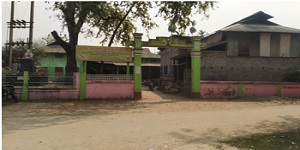 Bell metal utensils are an inevitable part of Assamese traditional life and culture. Sarthebari, under the Kamrup district during the British era and now under the Barpeta district of Assam has been the hub of traditional bell metal utensils, a part of cottage industries since the ancient period.
Bell metal utensils are an inevitable part of Assamese traditional life and culture. Sarthebari, under the Kamrup district during the British era and now under the Barpeta district of Assam has been the hub of traditional bell metal utensils, a part of cottage industries since the ancient period.
When the British came to Assam in the early nineteenth century, a bunch of businessmen also started pouring in. These businessmen blessed by the British, not only affected the traditional system of commerce but also started taking over all kinds of business from local hands. Implementation of land taxation system by British Government made lives of Bell metal artisans and labourers economically unviable. Most of their land being low-lying and waterlogged, it was unsuitable for cultivation and agriculture. The sporadic increase of land tax rates further compounded the problems. The exploitation by officials on tax collection duty started weakening the socioeconomic aspect of this famous bell metal cottage industry.
Taking a chance on such misery, this new bunch of powerful businessmen took over the bell metal business of supplying of raw materials and selling finished products. They slowly increased the cost of raw materials with a proportionate decrease in procurement price of finished products and also imposed a system of payment of commission while buying raw materials as well as delivering the finished products (termed as ‘mulmora aarugadeesotka’). By the beginning of the 20th century, Guwahati became the center of raw materials as well as finished products-related business for which the artisans had to either spend time and money on travels for procurement of raw materials and delivery of finished products or depend upon middlemen.
Kohiram Das of Sarthebari, who completed all his education from the school level to becoming the first honors graduate (philosophy) on scholarships and working as a teacher in Sonaram High School at Guwahati in the 1930s, was moved by this pathetic situation. Inspired by Mahatma Gandhi’s concept of ‘Swaraj’ he started mobilization to motivate the artisans to organize themselves as one community group. Finally, ‘Assam Cooperative Bell Metal Utensils Manufacturing Society Ltd’ was formed with a share of 10 Rupees per member through its first General Meeting on 5th November 1933 and started operating immediately which brought back the business to artisan’s hands. However, the Society could be registered only on 10th June 1939 under the Society Act of 1912.
During last 90 years, it has benefited thousands of artisans and labourers. Even today with more than 1,500 artisans working in about 200 bell metal manufacturing cottage units and 100s of employees are working in the sales counters established all over Assam against competition from machine made cheaper and attractive utensils, the ‘Assam Cooperative Bell Metal Utensils Manufacturing Society Ltd’ continues to create dividend contributing to socio-economic upliftment for artisan-members.
The birth of 90 years old ‘Assam Cooperative Bell Metal Utensils Manufacturing Society Limited’ is indeed an inspiring story of the ‘swaraj’ of Colonial India.
Swadeshi meeting at Barpeta, 1907
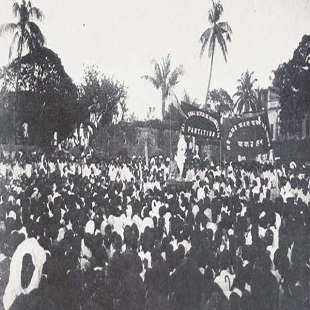 The partition of Bengal, initiated by Lord Curzon, was viewed by the nationalists as a challenge to Indian nationalism and ignited a nationwide anti-British movement and the heightened political atmosphere in Bengal influenced activities in Assam. An example of this was a meeting organised on 28th March 1907, in a local theatre hall in the Barpeta district of Assam.
The partition of Bengal, initiated by Lord Curzon, was viewed by the nationalists as a challenge to Indian nationalism and ignited a nationwide anti-British movement and the heightened political atmosphere in Bengal influenced activities in Assam. An example of this was a meeting organised on 28th March 1907, in a local theatre hall in the Barpeta district of Assam.
The meeting, presided over by Srijut Hariprasad Das, the son of Baburam Das (Deputy Inspector of school in Barpeta), saw the attendance of students, teachers and some local persons. It was convened by Rajendra Chandra Das and Ambika Charana Das, students at the local Entrance school. Lectures were delivered by Kandarpa Chandra Das, the seventh master of the Entrance school and Baburam Das, who resigned from his post at the school.
The meeting represented the initiative of the educated class including government officials to create awareness among the people regarding boycott of foreign goods and swadeshi. The student community played a pivotal role in the Swadeshi movement and were effective in promoting the use of swadeshi items and organising protest meetings and further undertook the circulation of political pamphlets.
The partition, that had amalgamated some eastern districts of Bengal with Assam and created a new province known as “East Bengal and Assam”, was finally annulled in 1911.
Participation of Women in Barpeta District Congress Committee, 1940
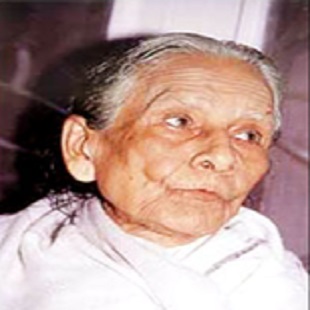 The Barpeta district of Assam witnessed the establishment of Barpeta District Congress Committees (DCC) following the decision of the Assam Provincial Congress Committee to set up District Congress Committees in each sub-division along with village committees.
The Barpeta district of Assam witnessed the establishment of Barpeta District Congress Committees (DCC) following the decision of the Assam Provincial Congress Committee to set up District Congress Committees in each sub-division along with village committees.
The district congress committees sought to effectively mobilise the masses in the struggle against the British empire. Considering the widespread participation of women in the national movement, Satyagrahi training camps were opened with the sole purpose of providing a disciplined training to women Satyagrahis in different parts of the State. Moreover, the Satyagraha Sanghas or clubs held numerous meetings. These training camps were launched at Hajo Nakachari, Goalpara, Barpeta, Gauhati, Tezpur, Jorhat, Sibsagar, Golaghat and Mongoldoi by women leaders of Assam and witnessed participation of a large number of women.
In Barpeta district, 159 women were enrolled as primary Congress members under the District Congress Committee out of 2759 persons and 36 women enrolled themselves as Satyagrahis till the last week of November 1940 under the Barpeta District Congress Committee. In the Baharigaon village near Barpeta, 35 out of 42 Satyagrahis were women.
The constructive programmes taken by women leaders in different parts of Assam led to greater involvement of all sections of the community in the freedom Movement. Indian National Congress established a women’s wing in Assam in September 1940 with Pushpalata Das and Amolprova Das as joint secretaries showing that the nationalist movement was an all inclusive one.
Guneshwari Mazumdar and Barnagar Mahila Congress
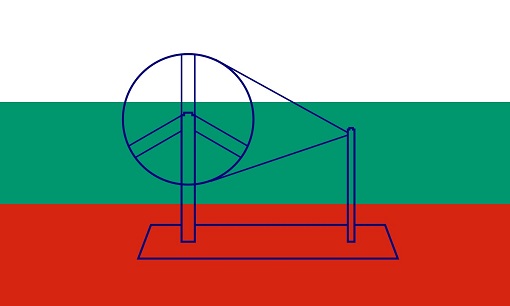 The Non-Cooperation Movement, launched by Mahatma Gandhi, electrified the masses with the promise of “Swaraj within one year”. People from all over India, and from all sections of society participated wholeheartedly in the national struggle. Guneshwari Devi, a resident of the Barpeta district in Assam, made a great contribution to the movement by establishing the Barnagar Mahila Congress.
The Non-Cooperation Movement, launched by Mahatma Gandhi, electrified the masses with the promise of “Swaraj within one year”. People from all over India, and from all sections of society participated wholeheartedly in the national struggle. Guneshwari Devi, a resident of the Barpeta district in Assam, made a great contribution to the movement by establishing the Barnagar Mahila Congress.
The message of the Non-Cooperation Movement evoked an enthusiastic response from the women of Assam, and they stepped out of their houses to mobilize the masses and promote constructive nationalist programs such as propagating swadeshi ideals, removal of untouchability, etc. In the Barnagar region of Barpeta, Guneshwari Mazumdar took the lead in encouraging the local women to contribute to the national movement. At her instance, the Barnagar Mahila Congress was established.
Members of the Mahila Congress tirelessly worked to promote the spinning and weaving of Khadi among the local women. The Mahila Congress remained active even after the withdrawal of the Non-Cooperation Movement, and in 1923, Mazumdar sent bundles of khadi clothes woven by the Congress volunteers to be distributed at the Gaya Session of the Indian National Congress.
Protest against the arrest of Congress leaders in Nalbari, 1942
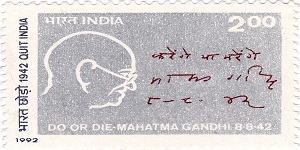 The Quit India Movement in 1942 spread all over India and sparked a nationwide movement. Women became an integral part of the movement and took part actively in all protests. Many people were arrested for the protests as well. Nalbari in the Barpeta district of Assam was also a part of the Quit India Movement, and various protests took place here.
The Quit India Movement in 1942 spread all over India and sparked a nationwide movement. Women became an integral part of the movement and took part actively in all protests. Many people were arrested for the protests as well. Nalbari in the Barpeta district of Assam was also a part of the Quit India Movement, and various protests took place here.
When the Congress leaders were arrested, thousands of men and women protested on August 14th, 1942. Large crowds of women with flags in their hands protested outside the Nalbari police station and shouted slogans against the arrests. The arrests had just taken place; hence, the women reached there to protest the arrests. The policemen had threatened to open fire as well. Ratnapriya, an old woman, took the lead and waved the national flag, bare-chested, and said, "Fire, if you dare to." The police were taken aback by this act and arrested her.
Women's participation in Nalbari was no exception. When it came to defending the citizens against the imperial powers, they never wavered. Similar conditions were created by Ratanpriya, who stood up against the administration in the name of patriotism.
Participation of Women of Bajali in Freedom Movement, 1941
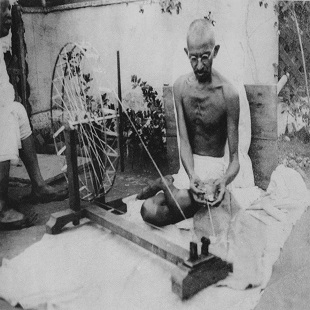 In 1941, many Assamese women came out to support the freedom movement. Adopting Gandhi's constructive programme, they held training camps and meetings for women Satyagrahis, which drew more participants than ever before. One place that witnessed this rise was Bajali, a rural subdivision of the Barpeta district.
In 1941, many Assamese women came out to support the freedom movement. Adopting Gandhi's constructive programme, they held training camps and meetings for women Satyagrahis, which drew more participants than ever before. One place that witnessed this rise was Bajali, a rural subdivision of the Barpeta district.
With the ‘Purna Swaraj’ celebrations at the beginning of the year, nationalist sentiments were already high in Assam. On 5th January 1941, as many as 4000 women from Bajali participated in a landmark meeting held at the Pathsala village. Just seventeen days later, a second meeting was held at the Khaturgari village on 22nd January. Seeing the patriotic participation across Bajali, the women of the village resolved to spin yarn regularly in support of the Swadeshi movement. They also declared it mandatory for women to become Congress members and contribute a powa, or 250 grams of spun cotton yarn, to the Khadi fund. Efforts like this brought many rural women to the forefront of the resistance, spreading the message of revolt to every household.
As far back as the 1800s, there have been records of women’s contributions to the national movement. The participation of Bajali women in 1941 recounts their integral role in the final phase of the freedom struggle.
Meeting at Pathsala, 1943
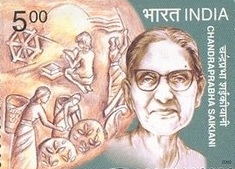 During the 1942 freedom movement, the women of Assam organised a non-violent protest against the colonial regime.
During the 1942 freedom movement, the women of Assam organised a non-violent protest against the colonial regime.
On January 26th, 1943, a gathering of around thousand people gathered in Pathsala, Barpeta district, to celebrate Independence Day. Because public gatherings were restricted at the time, the women met in a community prayer hall called Namghar, which was regarded as a religious gathering. Chandraprabha Saikiani presided over the meeting, and just as she was about to begin her speech, a group of armed policemen arrived. Samiruddin, the Officer-in-Charge of Pathsala police station, led the officers. He came in with a warrant for Chandraprabha Saikiani and drew her even though she objected to the use of physical force. The officer paid no attention to this. The women there reacted to this and a fight broke out between the two as a result of which Saikiani's clothes were damaged. She was nonetheless taken from there to the police station in that state. The women attempted to free Chandraprabha Saikiani while also attacking the police. These women were later arrested by the police. In addition to Guneswari Nath's arrest, Bhubaneswari Devi also suffered numerous injuries. The women later filed a petition in response to the police assault.
The women of Assam in order to achieve independence, fought valiantly against the colonial system.
Lachima Revolt
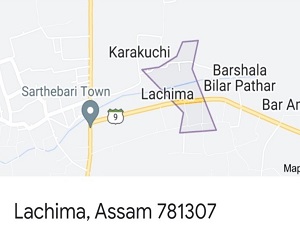 Lachima is a village located in the Sarthebari Sub-division under Sarukhetri mauza of the Barpeta district in Assam. The residents of this area were generally not economically well-off and were adversely affected by the frequent increase of land revenue as imposed by the colonial regime. The British government ordered the Mouzadars and Mandals of Sarthebari to collect revenue effectually. On 21 January 1894, the Mouzadar accompanied by a Mandal went to Kapla village to collect revenue.
Lachima is a village located in the Sarthebari Sub-division under Sarukhetri mauza of the Barpeta district in Assam. The residents of this area were generally not economically well-off and were adversely affected by the frequent increase of land revenue as imposed by the colonial regime. The British government ordered the Mouzadars and Mandals of Sarthebari to collect revenue effectually. On 21 January 1894, the Mouzadar accompanied by a Mandal went to Kapla village to collect revenue.
The peasants of the area assembled to discuss the grave situation. At that instant, a head constable with four policemen had gone to prevent the peasants from holding the meeting. The crowd which had assembled became furious at the developments. The fierce peasants severely assaulted the Mouzadar and the Mandal. Subsequent to the attack, the Mandal died on 28 January 1894. A total of seventy-five participants were arrested by the police for interrogation and investigation into the matter.
On receiving the news of that incident R. B. McCabe, the Deputy Commissioner of Kamrup rushed to Lachima on the evening of 24 January with a party of the 13th Bengal Infantry. The next morning, measures were taken for their arrest and fifty-nine persons were arrested and kept in a temporary lock-up. Then a huge crowd of about 3,000 persons gathered in front of the camp. A memorandum was submitted to the Deputy Commissioner signed by 6,000 peasants, demanding the release of their comrades and revocation of the reassessment order. However, the Deputy Commissioner insisted on the government's demand and warned them of dire consequences in case of the non-payment of revenue. The crowd then became furious and rushed towards him. McCabe ordered a bayonet charge on them and dispersed them from the spot.
Quit India and August Revolution (1942)
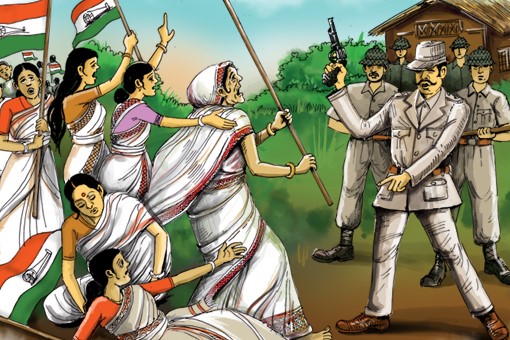 The year 1942 was a momentous time for the people of Barpeta, as for other parts of the country. According to Gandhiji’s guidelines, every Satyagrahi should vow that he would either be free or die in an attempt to make himself free. In this movement, like in other places of Assam, in Barpeta also most of the students continued to play an active part in the underground movement by not only boycotting their educational institutions but also by organizing themselves into Suicide Squads known as ‘Mrityu Bahinis’.
The year 1942 was a momentous time for the people of Barpeta, as for other parts of the country. According to Gandhiji’s guidelines, every Satyagrahi should vow that he would either be free or die in an attempt to make himself free. In this movement, like in other places of Assam, in Barpeta also most of the students continued to play an active part in the underground movement by not only boycotting their educational institutions but also by organizing themselves into Suicide Squads known as ‘Mrityu Bahinis’.
Under the greater Barpeta Sub-division, the people of the Bajali and Barnagar areas were politically more conscious. In the Quit India Movement of 1942, after Barpeta town, Bajali and Barnagar had played a very important role. Before the beginning of the Quit India Movement, the visit of Jawaharlal Nehru to Barpeta was a very significant event. A public meeting was held in the municipality field of Barpeta and Pandit Nehru delivered a speech before the huge gathering. The speech of Nehru also inspired the people the struggle for freedom.
Student Participation:
After the beginning of the Quit India Movement the student community of Bajali, Barpeta, Barnagar, Sarupeta, and other places of the subdivision left schools and joined as Congress volunteers. They became instrumental to create public awareness in the remote area of Barpeta. They encouraged the people for joining the freedom struggle. ‘Bharat Mata Ki Jai’ and ‘Gandhiji Ki Jai’ were the main slogans of the students.
For the good management of the Quit India Movement in the Barpeta subdivision, Action Committees were formed. In Bajali Council, Dr. Keshab Ch. Das was the President and Narakatna Das was the General Secretary. Dharanidhar Das, Chandraprabha Saikiani, Bhabananda Dutta, Manik Chandra Talukdar, Dr. Jinaram Das, Guneswar Sarma, Dr. Ananta Mohan Das, and Siddhi Ram Patgiri were the members of the ‘Council of Action’. They collected donations from various village areas for the management of the movement.
The people of Sarupeta, Bhabanipur, Salbari, and Motonga had also played a key role in the Quit India Movement of 1942. Leaders like Sukumar Pathak, Deenanath Choudhury, Trikendra Nath Choudhury, Fatik Ch. Talukdar, Basanta Choudhury, Kabi Deka, Golok Bhuyan, Rajendra Nath Deka, Prabhat Ch. Goswami and Udoy Nath Sarma played very prominent roles in the success of the movement. In Sarthebari and Bousi people of all classes joined this movement.
The wave of the Quit India Movement of 1942 had fully touched the Barpeta town also. Public meetings were held, and thousands of people joined this meeting. Akshyoy Kumar Das (B.L.) Kameswar Das, Madhusudan Das (B.L.), Upendra Nath Das (B.L.), Harikrishna Das, etc. were prominent leaders of the Barpeta town area. In addition to these, there were other prominent leaders of the Barpeta subdivision in the Quit India Movement.
According to the government records, there were 600 (approx.) people in the Barpeta subdivision who actively participated in the Quit India Movement. Among them, 288 persons were arrested, and out of these 64 persons were sent for rigorous imprisonment.
Civil Disobedience Movement and Barpeta (1930)
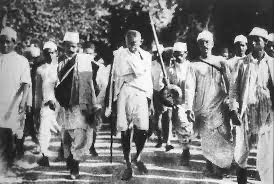 The unarmed independence movement was started in the year 1921. It enhanced the spirit of self-emancipation of Indians. Thereafter, the movement gained pace according to the activities put forth by the masses. Thus, in 1930 when the movement reached a climax the people declared openly that they, irrespective of being men and women, would be bound to protest against any law which would stand against the hopes and aspirations of Indians.
The unarmed independence movement was started in the year 1921. It enhanced the spirit of self-emancipation of Indians. Thereafter, the movement gained pace according to the activities put forth by the masses. Thus, in 1930 when the movement reached a climax the people declared openly that they, irrespective of being men and women, would be bound to protest against any law which would stand against the hopes and aspirations of Indians.
The wave of the Civil Disobedience Movement had also touched the people of Barpeta. Like other places in Assam, the people of Barpeta had joined this movement with their hearts and soul. Independence Day was observed on 26 January 1930 in the various remote areas of Barpeta. One big public meeting was held before the Barpeta Kirtanghar. Akshyoy Kumar Das, Mahenda Mohan Choudhury, and Madhusudan Das had delivered speeches before the mass gathering. The students and women participated in a long procession that day. People of Vella, Barbila, Batikuriha, Keotkuchi, and Baradi had also joined in this procession. Udaynath Sarma of Barpeta led the procession. ‘Mahatma Gandhi Ki Jai’, Bharat Mata Ki Jai’, and ‘Swadhin Bharat Ki Jai’ was the main slogan of this procession.
In the Howly area, one procession was arranged by Yadav Ch. Das and under his guidance a meeting was held on the same day. The students and Congress workers of Barpeta also protested against the Cunningham Circular. Many students and Congress volunteers were arrested by the police. Police atrocities were increasing day by day. Despite that, they were not able to stop the freedom-loving people of the greater Barpeta area.
Prominent leaders of Barpeta in the Civil Disobedience Movement were Dasarath Barman (Sarbhog), Phanindra Nath Choudhury (Bhabanipur), Ram Deb Choudhury (Barpeta), Mahendra Mohan Choudhury (Nagaon), Dr. Jina Ram Das (Pathsala), Akshyoy Kumar Das (Barpeta), Kameswar Das (Barpeta), Bharat Ch. Das (Barpeta), Harekrishna Das (Barpeta), Rajani Kanta Goswami (Palla Satra), Naranarayan Goswami (Muguria), Ananda Ch. Mahanta (Chak-Chaka), Muleswari Devi (Sarbhog), Basanta Kr. Oja (Dalahati), Prianath Sarma (Bhogpur) and Bhagaban Ch. Talukdar. Among 106 active participants, many persons were arrested and awarded rigorous imprisonment. The people fighting for independence were either punished with fined or jailed. At the time of the Civil Disobedience Movement, the British Government had announced the Congress Committees as unlawful. The repressive orders were carried out by the police during 1930-32, and they arrested most of the Congress workers.
Nonetheless, the people of Barpeta had played a very crucial role along with the people of Assam in the Civil Disobedience Movement of 1930-34. They were deeply influenced by the message of Gandhiji and local leaders. Various public meetings were held, and these meetings served as the platform for interaction of the people.
Non-Cooperation Movement and Barpeta (1921)
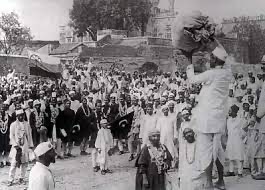 At the time of the freedom movement in India, Barpeta was amalgamated along with the Kamrup district. During the Non-Cooperation Movement, the people of this area played a key role. Barpeta was the birthplace of renowned nationalist leader Ambikagiri Roy Choudhury, who was the foundation head of the Swadeshi Movement of 1905. At the beginning of 1921, some people including students at Cotton College met on the campus of Barpeta ‘Kirtanghar’. It was the first meeting regarding the Non-Cooperation movement at Barpeta.
At the time of the freedom movement in India, Barpeta was amalgamated along with the Kamrup district. During the Non-Cooperation Movement, the people of this area played a key role. Barpeta was the birthplace of renowned nationalist leader Ambikagiri Roy Choudhury, who was the foundation head of the Swadeshi Movement of 1905. At the beginning of 1921, some people including students at Cotton College met on the campus of Barpeta ‘Kirtanghar’. It was the first meeting regarding the Non-Cooperation movement at Barpeta.
Gradually, the campus of Kirtanghar became an important meeting place for the movement. Once Tarunram Phukan joined in a meeting and delivered a lecture on the campus of Kirtanghar. The important moment of this meeting was the burning of foreign cloth. Tarunram Phukan led this burning ceremony. The crowd shouted the slogan of Lokmanya Tilak - ‘Swaraj is our birthright’, ‘Mahatma Gandhi Ki Jai’, ‘Bharat Mata Ki Jai’, etc. These slogans inspired the then people of Barpeta for their active participation in the Non-Cooperation Movement. Many persons of Barpeta left government jobs and courts.
Dhaniram Talukdar was the first advocate of Barpeta who left the service of court and joined the Non-Cooperation Movement. Second in line was Jagannath Prasad Das. At that time, the Barpeta Congress Committee was formed and Umesh Chandra Das (Brahmasari) was selected as the President and Dhaniram Talukdar as Secretary. The other prominent members of the Congress Committee were Debendranath Uzir, Praneswar Das, Ganesh Lai Choudhury, Ramnath Sarma (Pathsala), Kamaram Das, Akhay Kumar Das, Bangsidhar Choudhury, Jagabandhu Das, Nandamohan Majumdar (Barnagar), Golok Pathak (Chenga), Bhubaneswar Bhuyan (Sarukhetri), Gadadhar Thakuria, Ramoram Baishya, Gopi Choudhury (Bhabanipur) Sonaram Choudhury, Kabiraj Kirtinath Sarmah (Bajali) Sukhnaram Mandal, Ghanashyam Choudhury, Keshab Lai Das, Debendranath Sarmah (Sarukhetri), Rajendra Nath Choudhury (Galia) and Bishwa Nath Das.
In the subdivision, the important places namely Barpeta, Bajali, and Barnagar played a very key role in the Non-Cooperation Movement of 1921-1922. In the Non-Cooperation Movement of 1921-22 in Barpeta 54 persons, in Bajali 45 persons, and in Barnagar 19 persons had politically suffered, respectively. Along with Caste Hindus, many tribal (Bodo) people also participated.
In August 1921, when Gandhiji first came to Assam, he got down from the train at Sarbhog Railway Station and delivered a brief speech before the crowd assembled to visit him. This lecture had a great impact on the people of the greater Barpeta area. In this movement, the masses of Barpeta had suffered the police violence imposed by the British rulers. The women of Barpeta had played a very prominent role in the Non-Cooperation Movement. At Barnagar, under the leadership of Guneswari Majumdar, one women's Branch Congress Committee was formed. The leaders of the Non- Cooperation Movement of Barpeta - Gaurikanta Talukdar, Hariprasad Brahmchari, Debendranath Uzir, Dhaniram Talukdar, and Md Tybullah - were arrested. Although the highly enlightened leaders were arrested, the spirit of the Non-Cooperation Movement had not come to an end. But after the Chauri-Chaura riots in U.P., Gandhiji called a halt to the Non-Cooperation Movement. The All India Congress Working Committee accepted Gandhiji’s decision. In Assam, at that point, the Non-Cooperation Movement came to a halt.
Lachima Raij Mel (1894)
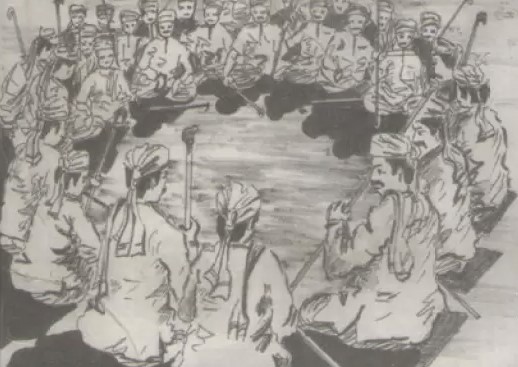 Lachima is a village under Sarukhetri mouza. Sarthebari is situated on the north side of Lachima. The dwellers of the area were poor, and the people were most affected when the land revenue increased frequently. The alien Government strictly ordered the Mouzadars and Mandals of Sarthebari to collect enhanced revenue.
Lachima is a village under Sarukhetri mouza. Sarthebari is situated on the north side of Lachima. The dwellers of the area were poor, and the people were most affected when the land revenue increased frequently. The alien Government strictly ordered the Mouzadars and Mandals of Sarthebari to collect enhanced revenue.
In the year 1894, the Mouzadar Das Ram Choudhury accompanied by the Mandal Haliram Mishra and the revenue Peskar went to Kapla village to collect revenue. The peasants of the area had met in the ‘mel’ (assembly) to discuss the situation. But at that moment, one head constable with four policemen went there to prevent the peasants from holding the meeting. The riots who assembled for the meeting became furious and attacked the Mouzadars and Mandal. They were seriously injured. Even if the Mouzadars could succeed to escape, the Mandal died a few days later due to the injury.
After this incident, seventy-five persons were arrested and kept in the Government rest house. The S.D.O of Barpeta, Madhav Chandra Bordoloi, who took the initiative to arrest these persons had to be released when a mob of about 3,000 men surrounded the camp and threatened to burn the rest house. Receiving the information, Mr. McCabe, the then Deputy Commissioner of Kamrup rushed to Lachima on 24 January with a party of sepoys of 13 Bengal Native Infantry.
On the next day of his arrival, fifty-nine persons including famous leaders and many other persons of the locality were arrested. This indiscriminate arrest caused widespread resentment and a petition signed by 6,000 riots was submitted to the Deputy Commissioner, demanding the release of the arrested persons. The mass deputations frightened him, and he ordered the military to use force against the people. Ultimately, the demonstrators dispersed. The peasants were badly tortured. Among the arrested persons, the upper caste people and elderly persons were punished with great humiliation and were compelled to plough the fields.
The prominent victims of this incident were – Jogeswar Goswami, Ananta Dev Goswami, Devinath Sarma, Makuram Talukdar, Mongal Ram Talukdar, and Pusparam Kahar. Many demonstrators were injured in the police atrocity. Among them, Tazu Seikh of Barigram and Latharia Kalita of Sarukhetri Mouza were seriously injured. The inhuman treatment of the alien Government instigated the masses to become furious. After this incident, another meeting was assembled in the Panatup. It was a lonely place situated between Lachima and Sarthebari. After receiving the information of the meeting, Madhav Chandra Bordoloi went to the place (Panatup) where people had assembled. But Mr. Bordoloi when failed to convince the people, became irritated and began abusing them. A protest succeeded against his behaviour. To discuss this issue another mel was held. As per the resolution of the public meeting (Mel), Madhav Chandra Bordoloi was fined rupees five and had to beg pardon from the villagers. But with the help of one Mohuri whose name was Kankata, Mr. Bordoloi could manage to run away from Panatup to Barpeta.
The police atrocity upon the armless riots was criticized by various newspapers viz. the Amrit Bazar Patrika, The Bengalee, and the Indian Nation. The reaction of the media had a great impact, and the British Government had to face criticism not only in India but also outside the country. Therefore, they were compelled to withdraw the new land tax enhancement policy.
Barpeta District and Colonial Regime
The present District of Barpeta formed an integral part of the Koch-Hajo State and the Ahom Kingdom till British Administration took over. The last battle for freedom of Assam against Burmese aggression (Maan) took place at the Hadirachaki, i.e., under Baghbar revenue circle of the district.
Wide-spread destruction of life and property took place when the Maans invaded Myanmar. Even the Barpeta Satra was razed to the ground during this invasion. To restore peace British army entered Barpeta to drive off the invader. In the year 1841, Barpeta became a Civil Sub Division and John Batlor was appointed as the first administrator of the subdivision.
As part of the British policy of exploitation, land-revenue rates were suddenly enhanced that resulting in several peasant unrests during 1869-94, particularly in Bajali, and the Sarukhetri area. A large number of arrests were carried out to foil attempts of unrest. The Lachima Uprising is one such shining example of peasant revolt against British rule.
Source :
- Indian Culture Portal
- Chakreswar Deka, Contributor for CCRT
- Taffazul Haque Choudhury, Contributor for CCRT
- District Information & Public Relations Officer, Barpeta
- District Information and Public Relations Officer, Barpeta
- Azadi Ka Amrit Mahotsav
Last Modified : 8/14/2023
Provides information about Alluri Seetha Rama Raju...
Process to apply for Driving License in Barpeta di...
This topic provides information about People and P...
